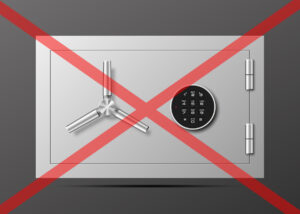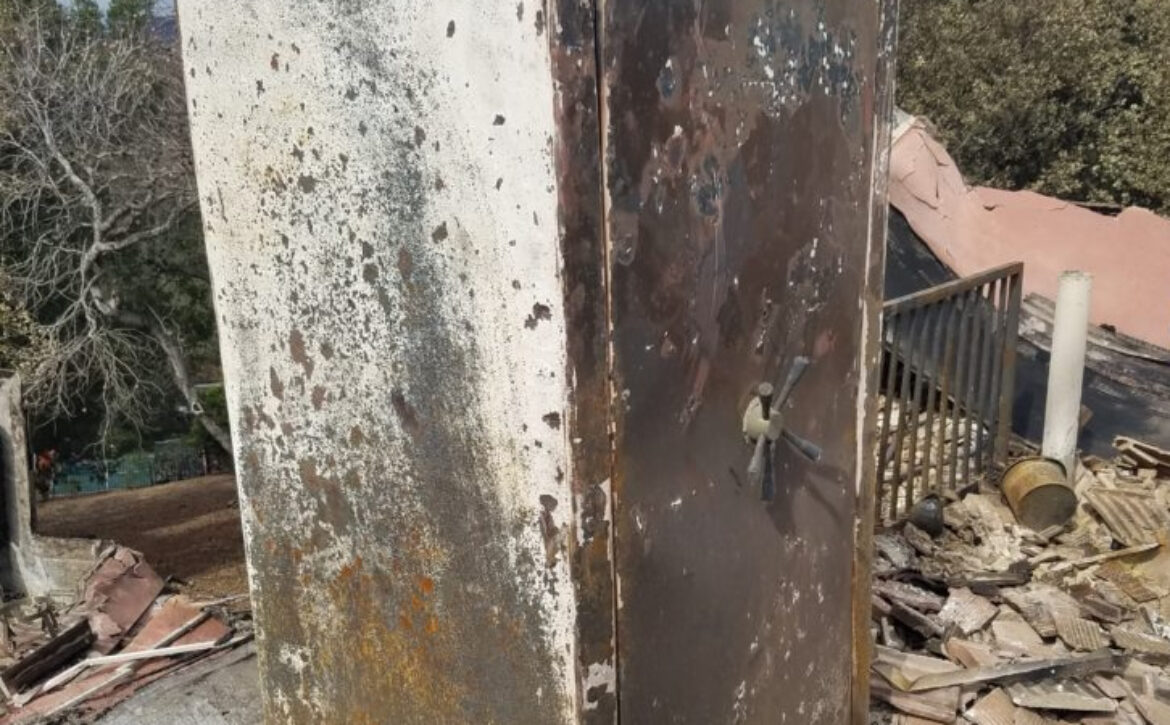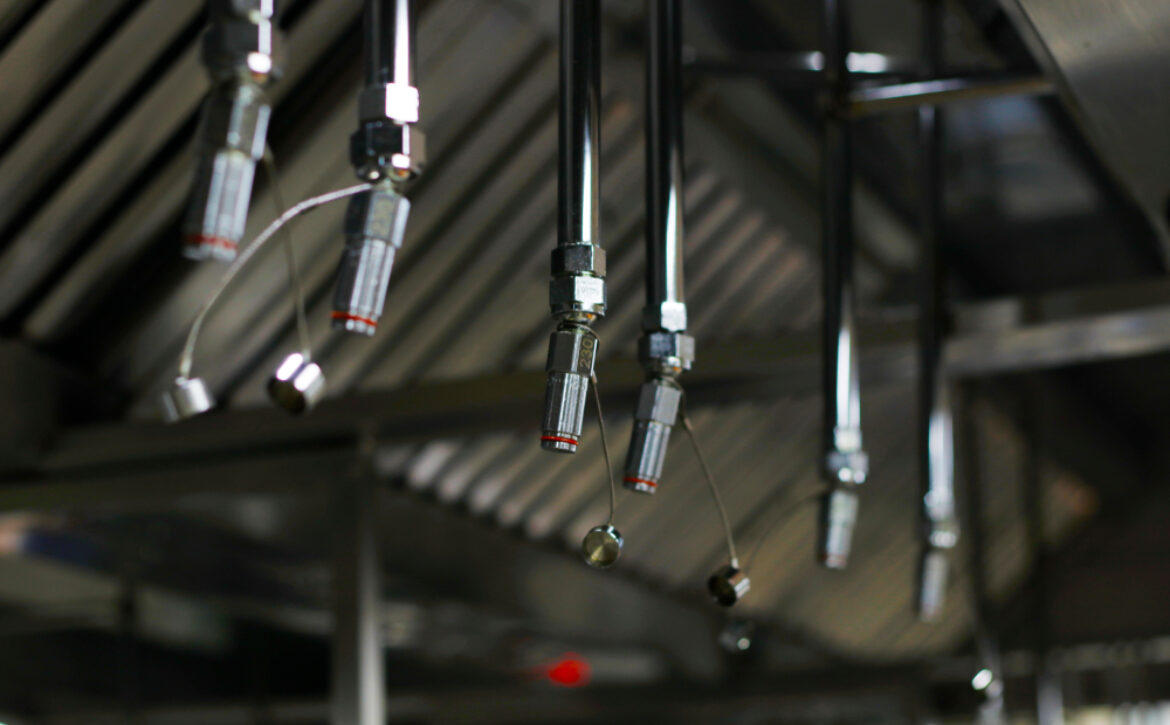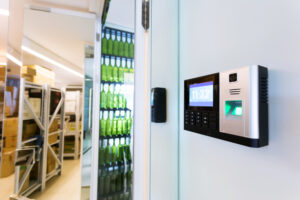What Should I Look For in a Fireproof Safe?
We all have precious belongings that we need to protect, such as jewelry, personal documents, and more. While theft is often people’s first concern, fire damage causes losses several times greater than burglary each year. While most homes have robust fire insurance, there are some things that insurance can’t replace. Active fire defense systems such as sprinklers can greatly reduce damage to your home, but might not work in time to save fragile items. If you want to protect personal documents, pictures, and other items in the event of a fire, you’ll need a fireproof safe.
Most safes are vulnerable to fires because of the fact that the surrounding heat transfers into the safe. As time goes by, the safe turns into an oven that crosses the critical temperature of 350 degrees, the point where paper begins to char. Fireproof safes make use of a mechanism to produce steam from the heat, which releases much of the heat energy and keeps your safe below the critical temperature.
When you’re looking for a good fireproof safe, here are some guidelines to keep in mind.
What Attributes/Features to Look for in a Fireproof Safe
There are many fireproof safes on the market, each with varying specifications and ratings. The first step to choosing the perfect fireproof safe is to understand your own needs. Once you understand what you’re looking for in a safe, it’ll be easy to choose the right one.
The Right Mix of Protection
Safes have two separate ratings; a fireproof rating and a burglar rating. The first indicates resistance to fire and whether your safe will protect your belongings for one hour, two hours, or more of extreme heat exposure. One-hour heat protection can be suitable if you have other anti-fire defenses, such as fire alarms, but two hours is ideal. However, even a two-hour fireproof safe might still have a low rating for burglar attacks.
The burglar rating indicates how difficult it is to break into the safe. Many fire-resistant safes have a poor burglar rating and are easy to break into. If you only intend to store family photos and other items without financial value, then this is fine. A simple, B-rate safe with no alarm is fine for such usage. However, you also need to keep your future use of the safe in mind.
A Rating for Your Future Needs
A good safe can last for decades, which is why you shouldn’t just think of what you need right now. It’d be a shame to buy a basic safe for sentimental items this year only to find that you need to store jewelry and cash next year. Before making your purchase, you should consider whether or not your secure storage needs will increase in the foreseeable future.
Data and Media Protection
The drawback to the steam defense mechanism against heat is that it creates a significant amount of moisture. Nowadays, we increasingly keep our precious memories on hard drives, but even records and tape are vulnerable to moisture. If you intend to keep items that are susceptible to moisture and humidity in your fireproof safe, you’ll need to seek one with data and media protection features. This feature indicates that the safe will keep humidity below 85%, a safe range for most items that you might want to store.
Avoid Wall or Floor Safes
 Floor and wall safes are both poor choices for a fireproof safe in the home. While people might assume that a floor safe is well-insulated against heat thanks to the concrete surrounding it, this misses one key detail; the metal door. The door of a floor safe will quickly conduct the heat of the fire and spread to the interior, at which point the heat can damage your valuables.
Floor and wall safes are both poor choices for a fireproof safe in the home. While people might assume that a floor safe is well-insulated against heat thanks to the concrete surrounding it, this misses one key detail; the metal door. The door of a floor safe will quickly conduct the heat of the fire and spread to the interior, at which point the heat can damage your valuables.
While there are wall safes with flame retardant materials in the door, this type of safe is generally easy to steal and therefore not suited for home use. Free-standing safes typically offer the best combination of fire security and defense against burglars.
Anchor Holes
If you want to use your fireproof safe to protect valuables from burglars, make sure that you anchor it down. Since you aren’t using a floor safe, it’s vital that you prevent burglars from easily moving your safe. Physically strong, determined robbers with simple tools can steal even the largest safe in a matter of minutes. Stealing a safe and breaking into it off-premises is much easier than breaking in on the spot, so choose a fireproof safe with anchor holes that can keep it secured to your home.
WFX Fireproofs Your Home
WFX is one of the top providers of all manner of home security systems. We offer active fire defense systems, passive systems, as well as all of the services you need to keep them running. If you need preventative maintenance for your fireproof safe or any other home protection services, get in touch with us.




 Many fire suppression systems are built directly into an exhaust hood. These integrated builds require specific configurations to remain compliant with safety protocols. For instance, large flat surfaces require nozzles to be installed directly overhead. In contrast, enclosed or partially enclosed equipment requires nozzles are pointed directly inside the equipment.
Many fire suppression systems are built directly into an exhaust hood. These integrated builds require specific configurations to remain compliant with safety protocols. For instance, large flat surfaces require nozzles to be installed directly overhead. In contrast, enclosed or partially enclosed equipment requires nozzles are pointed directly inside the equipment.
 There are various types of access control systems for different kinds of environments and operations. Understanding the following types of systems can assist your organization in determining what system or combination of systems will be best suited to your requirements.
There are various types of access control systems for different kinds of environments and operations. Understanding the following types of systems can assist your organization in determining what system or combination of systems will be best suited to your requirements. This is the primary controller of an access system. The panel takes in data from the reader, translates the encryption, and verifies the data against what is loaded into the system. If the data received matches with the data in the system, a lock would open and grant access.
This is the primary controller of an access system. The panel takes in data from the reader, translates the encryption, and verifies the data against what is loaded into the system. If the data received matches with the data in the system, a lock would open and grant access.